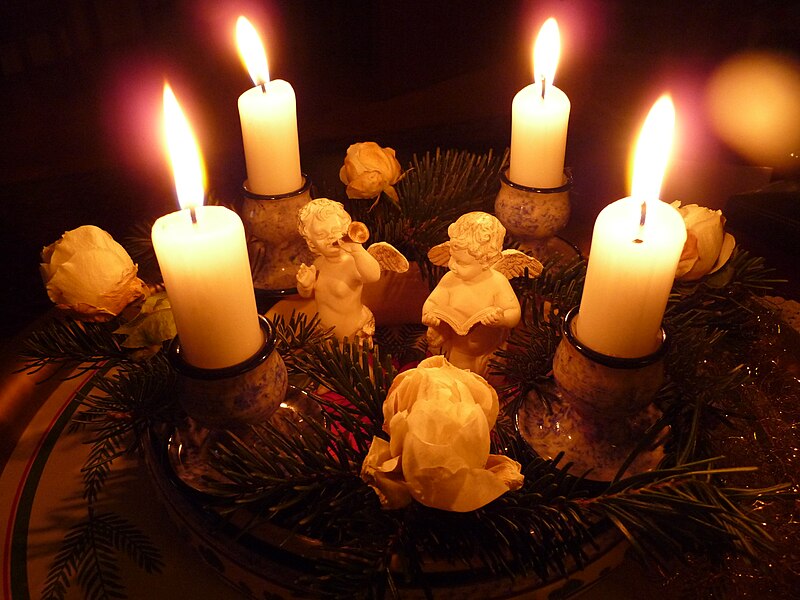The Adventskranz is a usually made of pine boughs woven table-top or wall decoration with the four Advent candles. The candles are lit during the Christmas season in succession: On the first Sunday of Advent, a candle lit from the second Advent, the second and so on.
The Adventskranz in had benn introduced by the Evangelical-Lutheran theologian and educator Johann Hinrich Wichern (1808-1881) in 1839. Wichern decided to take care of some children who lived in great poverty in Hamburg / Germany and moved with them into an old farmhouse. During the Christmas season the children always wanted to know when was Christmas, so in 1839 he built a wooden ring with 19 small red and four large white candles from an old wagon wheel. Every day of Advent,
now one more candle was lit, the Advent Sunday, a large candle more, so the children could count the days until Christmas. From this great design you have several versions: with a minimum 18 when the Christmas Eve coincides with the fourth Sunday of Advent, to a maximum of 24 small candles (when Christmas Eve falls on a Saturday) and four large candles, in the Adventskranz has developed with four candles.
now one more candle was lit, the Advent Sunday, a large candle more, so the children could count the days until Christmas. From this great design you have several versions: with a minimum 18 when the Christmas Eve coincides with the fourth Sunday of Advent, to a maximum of 24 small candles (when Christmas Eve falls on a Saturday) and four large candles, in the Adventskranz has developed with four candles.
The occasionally voiced suspicion that the wreath existed long before the days of Johann Hinrich Wichern is based on a poem, which describes the Adventskranz and is often falsely attributed to Matthias Claudius (1740-1815) . In fact, the poem is from his great-grandson of Hermann Claudius (1878-1980).
There are different interpretations of the symbolism of the Adventskranz. The original symbolism of light as is the increase reflects the growing expectation of the birth of Jesus Christ, who is in the Christian faith called "Light of the World."



No comments:
Post a Comment